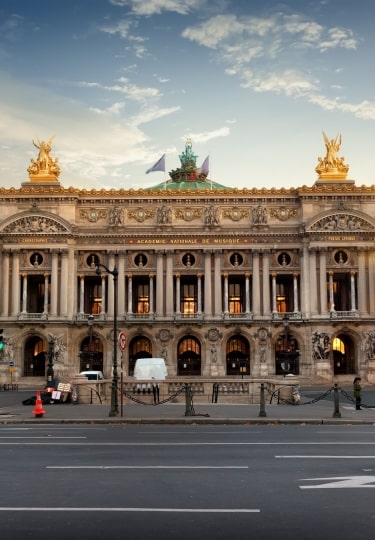A theater can tell you a lot about a city, as it’s often inextricably entwined with the psyche of its people, culture, and history. In many cases, a grand theater is a landmark or a national icon, the building itself as famous as the actors and singers who perform in it.
Whether or not you get to see a play or an opera on your travels, theaters have stories to tell. Book a behind-the-scenes tour or simply take in the grand façade and imagine the secrets contained inside. Here are 10 of the best theaters in the world, from ancient to ultra-modern, each with a fascinating history.
Sydney Opera House, Sydney
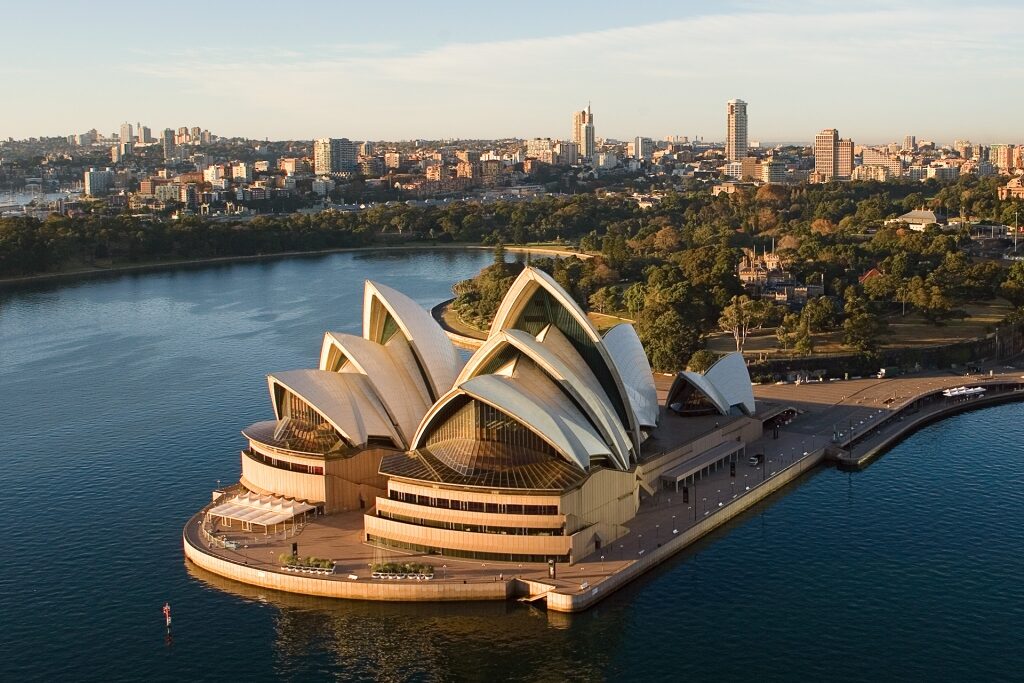
Sydney Opera House, Sydney
The Sydney Opera House’s graceful ‘sails’ are an unmissable sight in the shadow of the Sydney Harbour Bridge, on Bennelong Point. It’s the most visited landmark in Australia and is one of the most famous theaters in the world.
Designed by Danish architect Jørn Utzon, who won an architectural competition for his adventurous vision, the Sydney Opera House opened in 1973. But by the time of its grand unveiling, Utzon had long since resigned from the project because of escalating costs and disagreements and never returned to Australia to see the completed building.
You can join any number of tours, which should be booked in advance. There’s an opera house tour, where you’ll learn about the history of the building and the performances that have taken place here, or an architectural tour, which goes into the complex construction of the building.
A backstage tour of this Sydney landmark takes you behind the scenes and is filled with gossip and intrigue, while a mysterious House After Dark tour tells the story of the ghosts and spirits who roam the corridors, stages, and dressing rooms of the venue.
The Sydney Opera House is situated on a site that’s been sacred to the Gadigal people for thousands of years, a fact that’s acknowledged in Badu Gili, a daily six-minute narration of aboriginal stories told with dramatic, colorful scenes that are projected onto the sails at sunset and throughout the evening. If you’re in Sydney for the night, Badu Gili is a beautiful sight.
Teatro Colón, Buenos Aires
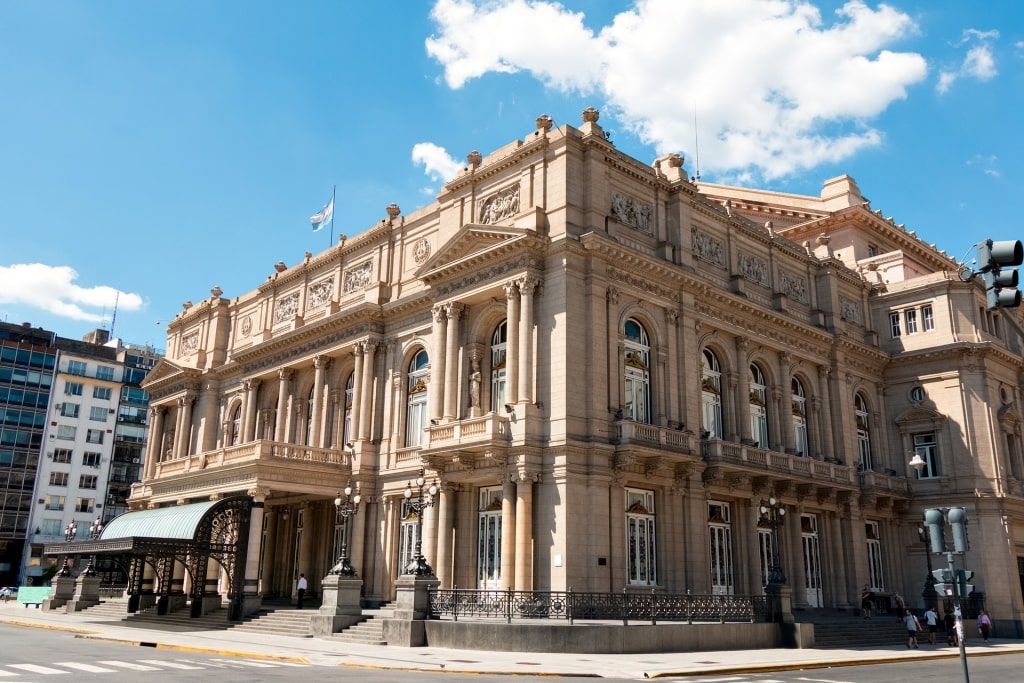
Teatro Colón, Buenos Aires
Teatro Colón in Buenos Aires is as graceful as you’d expect in this most elegant city, built in the eclectic style and occupying an entire block. Opened in 1908, this grand, seven-story building has such superb acoustics that it’s considered one of the best theaters in the world, as prestigious as La Scala in Milan or the Royal Opera House in London’s Covent Garden. All the greats have performed here, from Placido Domingo, Jose Carreras, and Luciano Pavarotti to Joan Sutherland and Maria Callas.
Inside, the theater is all plush red velvet, gilt, ornate tapestries, and exquisite stained glass. A guided tour will take you to the double-height foyer, which is covered in sumptuous, colored marble with a sweeping staircase to the richly decorated Golden Hall that is used for chamber music.
The Main Hall is jaw-dropping in its opulence. A hand-painted dome works as the centerpiece, from which a glittering crystal chandelier with 700 bulbs hangs. You’ll also have a glimpse behind the scenes of the artists’ changing rooms, rehearsal rooms, and costume and wig stores.
Read: 14 Famous Landmarks in South America
Victoria Theatre, Singapore
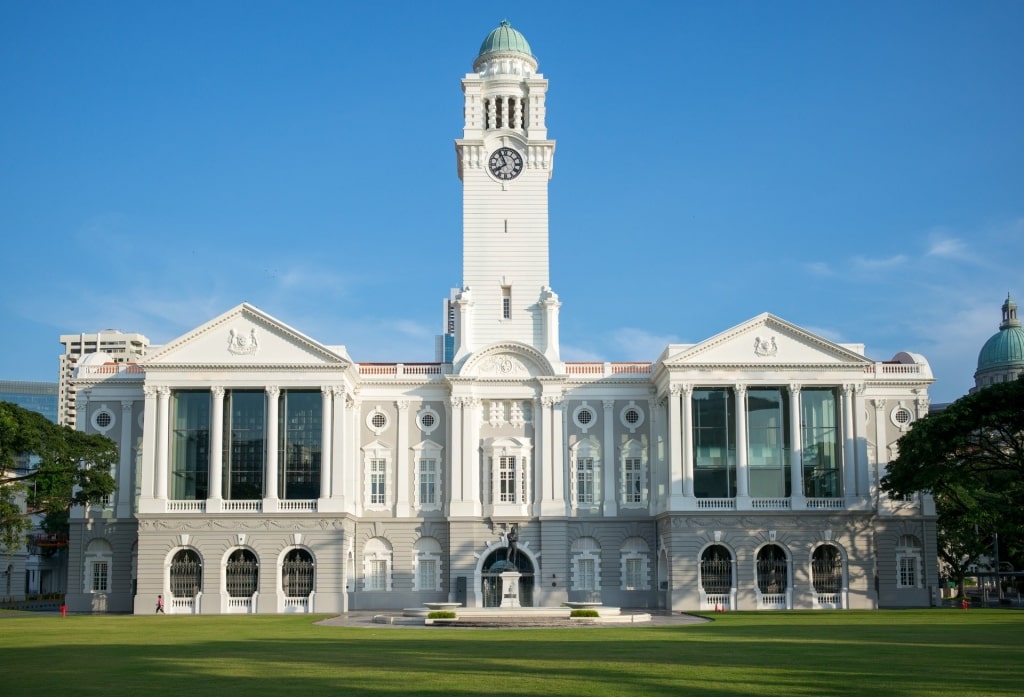
Victoria Theatre, Singapore
Singapore’s Victoria Theatre and Concert Hall was built in 1862 when the city’s skyline would have looked considerably different. Today, it’s a Singapore landmark and its handsome gray and white neoclassical façade is a contrast to the city’s glassy skyscrapers.
The theater was originally built as a town hall with a theater attached. Soon, though, it became too small to serve either purpose. Queen Victoria passed away in 1901 and it was decided that a memorial hall would be built next to the town hall in her honor in the same Palladian style with a clock tower at the center to unite the two buildings.
What you’ll find today inside is a 614-seat theater and a concert hall accommodating 673, as well as rehearsal rooms. The building was further expanded in 1979 when a gallery was added to the Memorial Hall, transforming the venue into a suitable home for the prestigious Singapore Symphony Orchestra.
Today, the venue hosts classical concerts, movies, theater, and dance productions, and is home to major events like the Singapore International Piano Festival.
Read: Best Skylines in the World
Teatro Greco, Taormina
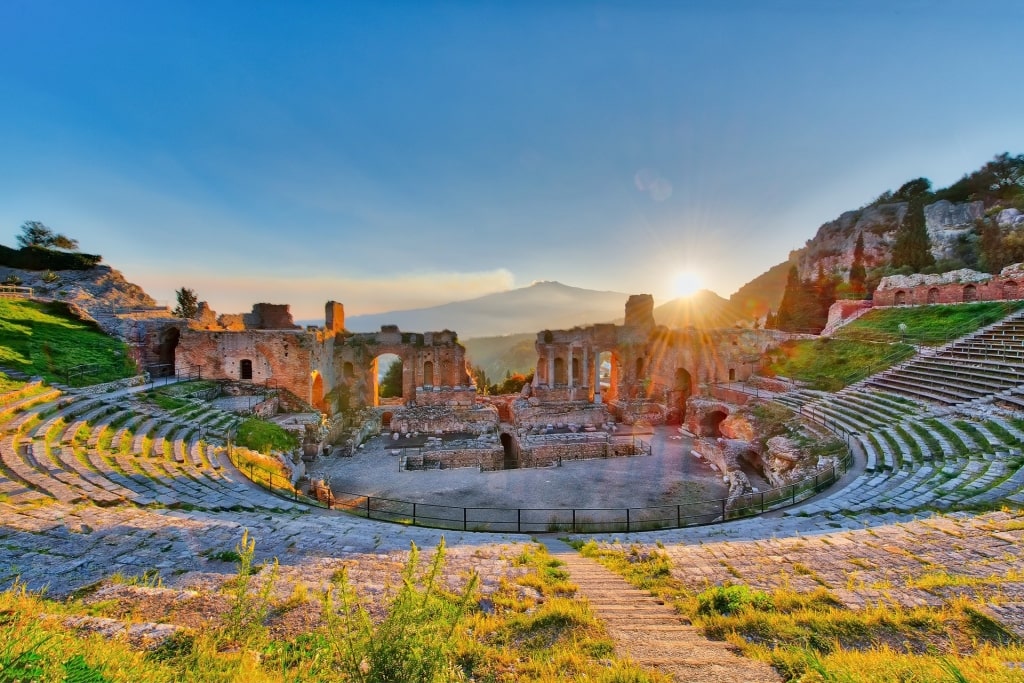
Teatro Greco, Taormina
Medieval Taormina on the island of Sicily drapes across a hillside above the seaside resort of Giardini Naxos with the smoldering hulk of snow-capped Mount Etna as its dramatic backdrop. A wander through the medieval streets will lead you to one of the world’s most beautiful Greco-Roman amphitheaters, the Teatro Greco.
A perfect horseshoe, the Teatro Greco was built in the third century BC and cut into the rock high above the sparkling Mediterranean. The original theater is believed to have been constructed by the ancient Greeks as a performance space with modifications made by the Romans, who used it for gladiator fights in front of an audience of 5,400.
The ruins of the stage and backdrops are incredibly atmospheric, especially given the heart-stopping beauty of the view. Listen to the pure strains of opera on a balmy evening as the sun goes down and the summit of Etna glows pink in a moment of pure magic.
There’s a regular program of opera and pop concerts here all summer long, with past performers including Sting, Dire Straits, Simple Minds, and Italian opera trio Il Volo.
Read: Best Places to Visit in Sicily
Water Puppet Theater, Hanoi
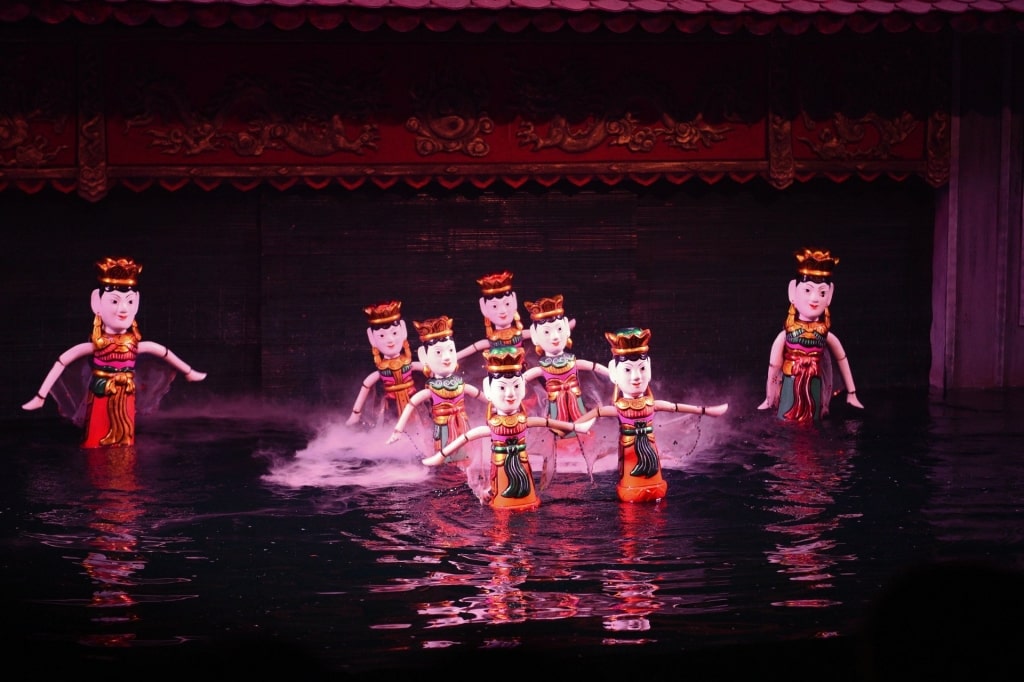
Water Puppet Theater, Hanoi
The performance at Thang Long Water Puppet Theatre in Hanoi is an art form unique to Vietnam. Water puppetry stems from the 11th century when villagers would create entertaining shows in the flooded rice paddy fields while standing waist-deep in water. Their puppets would be supported on long rods, giving the illusion that they were moving over the water independently.
Today’s shows appeal to a multilingual audience, as the ancient folk tales are told by mime and operatic music. A Vietnamese orchestra accompanies the performance, using drums, cymbals, wooden bells, and flutes. The audience is taken through a journey of village life, harvests, mythical creatures, and legends, with just eight puppeteers deftly handling the actors.
The one-hour show is colorful and often humorous with audiences enchanted by the skill of the puppeteers and the intricacies of the puppets, which include fire-breathing dragons, boatmen, and water buffalo. This is one of the best things to do in Hanoi if you’re looking for a charming and entertaining way to spend an evening.
Read: 15 Inspiring Things to Do in Vietnam
Shakespeare’s Globe, London
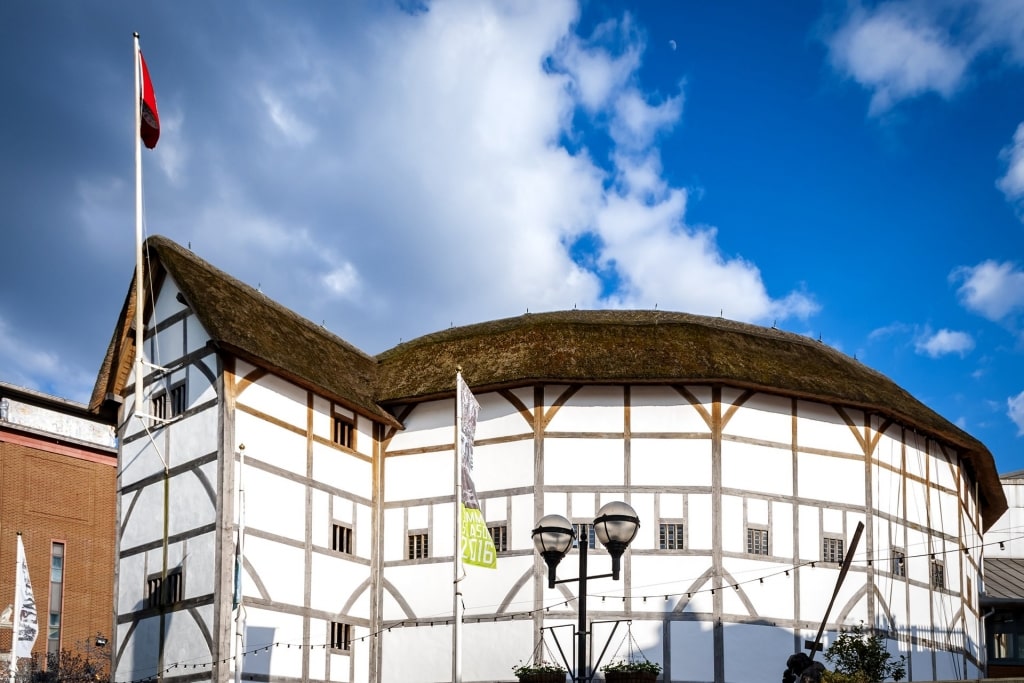
Shakespeare’s Globe, London
London has a number of incredible theaters, from the Royal Opera House to the London Palladium and Albert Hall. One of the most famous theaters in the world, though, is Shakespeare’s Globe.
Founded by the late visionary American director Sam Wanamaker, the theater opened in 1997 at Bankside on the south bank of the Thames, opposite St Paul’s Cathedral. The 1,570-capacity venue was built as theaters often were in the time of Shakespeare, in the round, with no roof and with the stage in the middle of the audience.
There’s been a Globe Theatre on this spot before. The original was built in 1599, specifically to stage Shakespeare’s plays, but it burned down in 1613. The venue was rebuilt and was used until 1642. Today’s incarnation is an authentic reproduction, built on an oak frame with a thatched roof and the exterior whitewashed with lime.
Everything about Shakespeare’s Globe is fascinating, from the history of the building to the fact that the audience is always part of the performance, as it would have been in Shakespeare’s era—a fact loved by the actors, too. If you can’t catch an evening performance, there are plenty of matinees and a wide program of tours and workshops, including sessions that bring The Bard alive for children and teens.
Teatro La Fenice, Venice
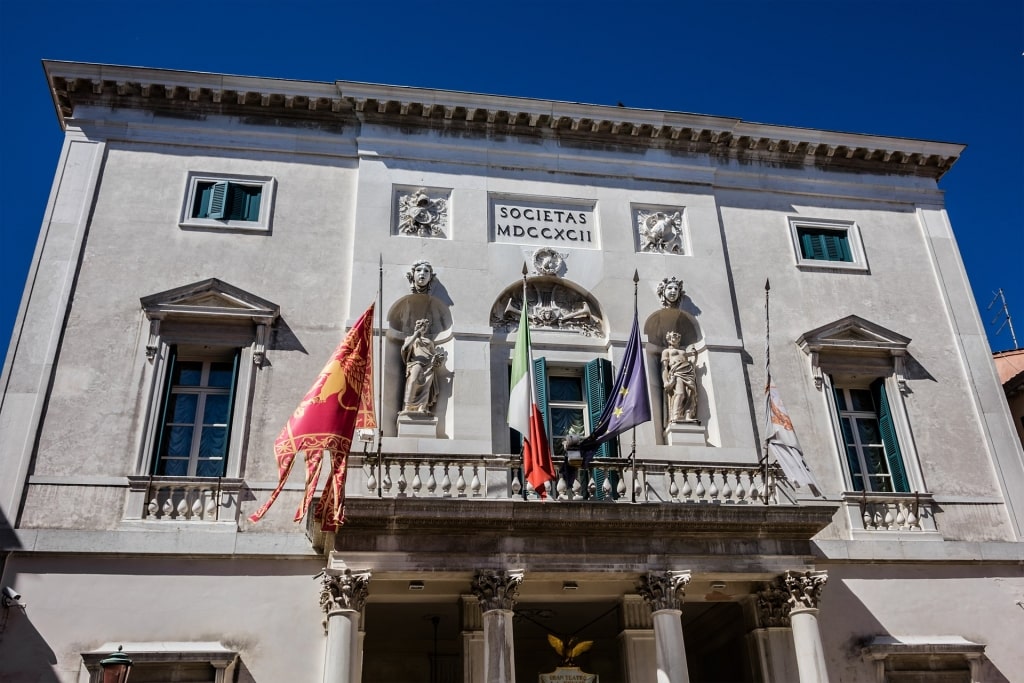
Teatro La Fenice, Venice
Teatro La Fenice, translated as “the phoenix,” is aptly named, as this grand opera house has risen twice from the ashes and the green canals of Venice. The first theater opened on this site in 1792 but was destroyed by fire in 1836. The opera house was rebuilt at incredible speed, opening just a year later in December 1837.
Operas written by Rossini, Verdi, Bellini, and Donizetti have had their debut performances here; both Verdi’s Rigoletto and La Traviata were commissioned by La Fenice. All the greats of the 20th century performed here, too, from Callas to Pavarotti. On January 29, 1996, La Fenice burned down again, and much like before, it was rebuilt and opened in December 2003, as beautiful as the original.
Inside, La Fenice is incredibly ornate, a riot of gleaming gold and stucco, painted ceilings, red velvet, and glittering chandeliers. There’s a permanent Maria Callas exhibition, too, dedicated to the great diva’s years in Venice. Catch a performance if you can or join a behind-the-scenes tour to learn about the provenance of this spectacular place.
Gran Teatre del Liceu, Barcelona
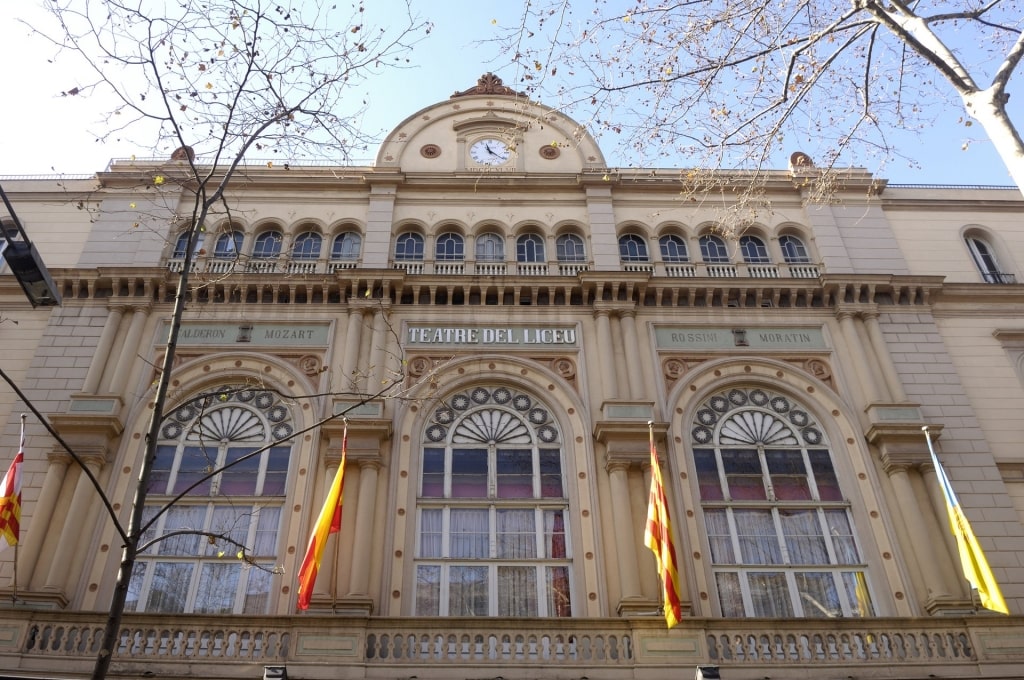
Gran Teatre del Liceu, Barcelona
This famous opera house in Barcelona was opened in La Rambla in 1847 and has been an icon of the city ever since. But like La Fenice, it’s been razed to the ground twice by fire.
The first theater, at its time the largest and most state-of-the-art in Europe, burned down in 1861 after a fire in the on-site tailor’s workshop raged out of control. The rebuilt Gran Teatre del Liceu reopened in 1862 but in 1994 was again destroyed by fire. A third incarnation opened in 1999 with a performance of Turandot in a setting faithful to the original but with more high-tech machinery.
You’ll see the theater as you stroll along the Rambla boulevard. Take a tour inside to admire the gleaming marble staircases and ornate columns, the elaborate Florentine style of the vestibule, the mirrors rescued from the fire and carefully restored, and the Hall of Mirrors, once a glamorous meeting space for the Catalan bourgeoisie.
With five levels and a seating capacity of 2,292, the main auditorium was inspired by the great La Scala in Milan. Join a backstage tour, which includes the vast stage, dressing rooms, and technical areas and paints a vivid picture of the enormous complexity of staging an opera.
Palais Garnier, Paris
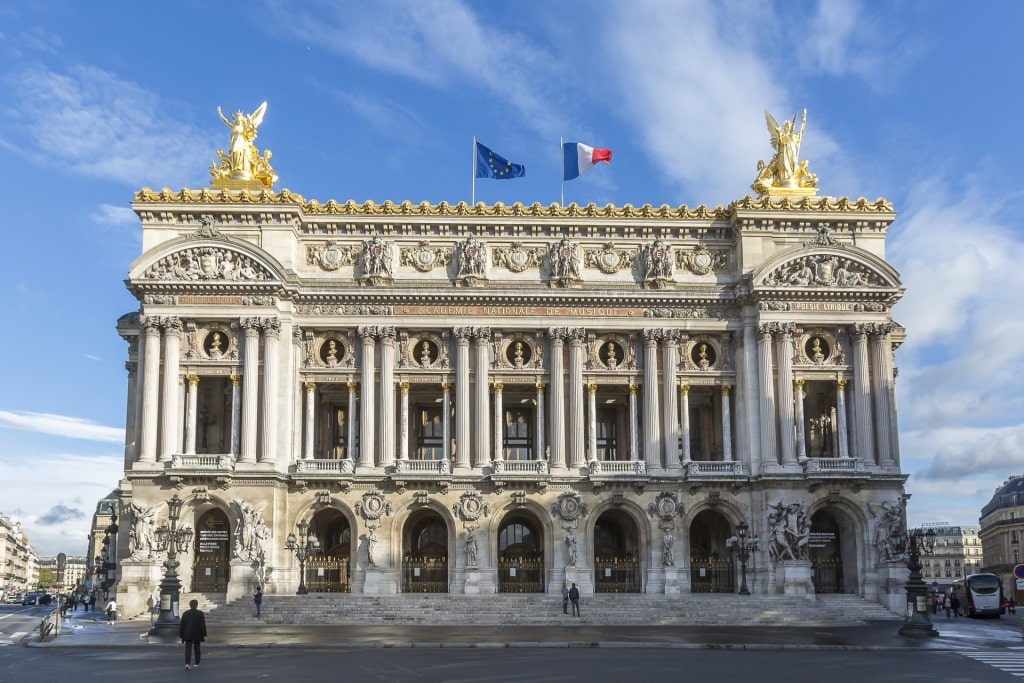
Palais Garnier, Paris
This grand opera house in Paris was designed in 1860 by an unknown architect called Charles Garnier. To this day it is one of the most lavishly beautiful buildings in the City of Light, dominating the Place de l’Opera.
The Palais Garnier is one of the major landmarks that Paris is known for and served as the inspiration for the story of the Phantom of the Opera. Take a guided tour and you’ll visit the boxes on the first level, one of which belonged to Gaston Leroux, author of the book about a masked figure who lurks in the catacombs beneath the Palais Garnier and becomes obsessed with a young soprano.
The building itself is truly opulent. A starkly modern fresco by Chagall is the centerpiece of the grand auditorium and is illuminated by a vast, eight-ton bronze and crystal chandelier with 340 lights. Elsewhere, you’ll see tapestries depicting fishing and hunting scenes, dancing bacchantes and animals, as well as shimmering mosaics and busts of famous performers.
Read: One Day in Paris
Teatru Manoel, Valletta
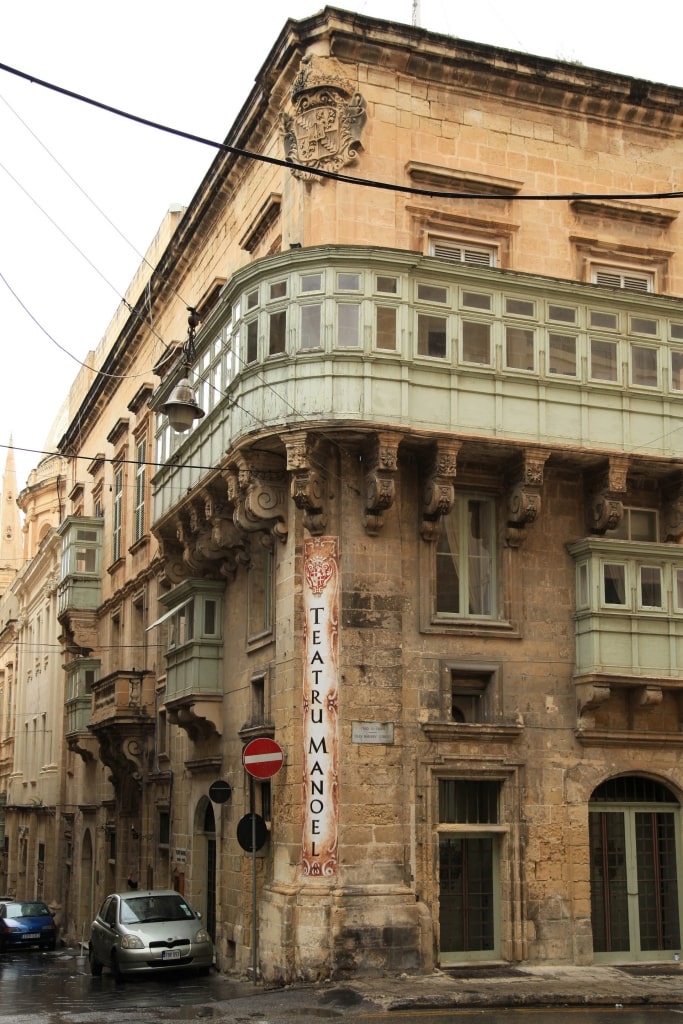
Teatru Manoel, Valletta Photo by Frank Vincentz on Wikimedia Commons, licensed under CC BY-SA 3.0
Valletta’s historic theater was built in 1731 on the order of Grandmaster Anton Manoel de Vilhena, after whom it’s named. Today, the Manoel is one of the oldest working theaters in the world, having survived plagues, invasions, and sieges. You’ll see it on Old Theatre Street in the heart of Valletta.
The façade is relatively simple but make sure to take time to peek inside during a tour. The theater is compact compared to some of the grand opera houses in other European capitals but exquisite inside, decorated in ornate rococo style with a pale blue, trompe l’oeil ceiling and a sparkling chandelier. The boxes were originally made of stone, which couldn’t have been comfortable, but were later converted to wood and decorated with gold leaf.
The theater is home to the Malta Philharmonic Orchestra, but hosts contemporary and classical performances, as well, including a family pantomime at Christmas. Countless famous names have performed here, from Joseph Calleja, Malta’s famous tenor, to Sir Yehudi Menuhin, Dame Kiri Te Kanawa, and Dame Moura Lympany.
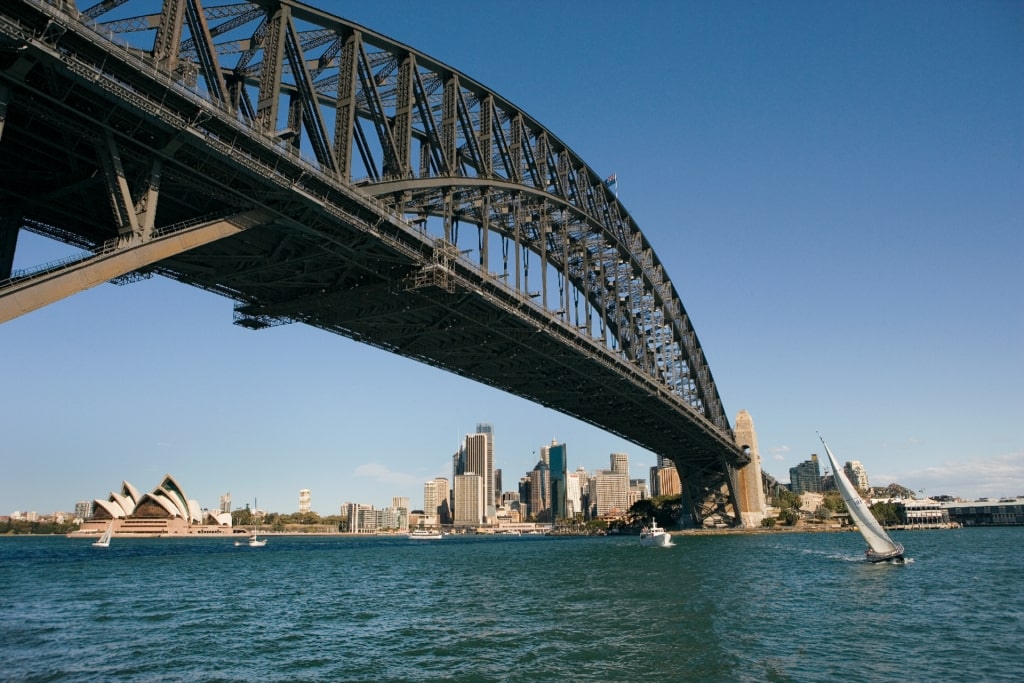
Sydney
Set out on your own cultural discovery on our range of exciting cruises. Browse our itineraries and start planning your next adventure.
